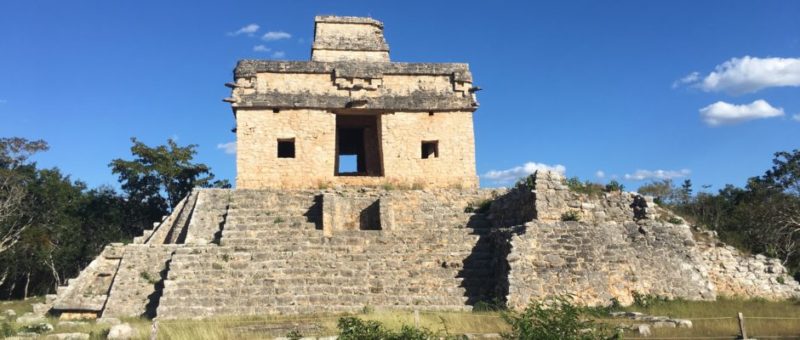Dzibilchaltun Ruins, Merida
Dzibilchaltún (pronounced Ts’íibil Cháaltun) is a comparatively small Maya archaeological site in the Mexican state of Yucatán, approximately 10 miles north of the state capital Mérida. It is in the extreme north of the Maya Region, not far from the Gulf of Mexico. The site has been continuously occupied for about 3,000 years up until the arrival of the Spanish, and is known to be the longest functioning city of the Mayan world.
Archaeologists have studied nearly 35 sq km of the city, and the area that has been mapped includes over 8,000 structures, though most cannot be seen due to growth of trees and vegetation. It was once a wealthy port and center of Mayan coastal trade and had a peak population of about 20,000, although it declined with the rise of Chichen Itza. Restoration still continues here.
The Park
Hours: 8:00-5:00. Museum open 8:00-4:00. A small entrance fee to this national park includes the ruins, grounds, museum, cenote (swimming) and church. The Dzibilchaltun complex offers an information office, telephone, handicapped facilities, restrooms, parking, a small gift shop, and a restaurant. Private guides are available for a fee. Allow a half day to visit.
Major Attractions
The most famous structure is the Temple Of The Seven Dolls (Templo de las Siete Muñecas), so named because of seven small dolls or figurines found inside. The temple was discovered by archaeologists in the 1950s under the ruins of a larger pyramid that was constructed over it. Building temples on top of temples was a common practice with the Maya. The dolls were found in the temple, but are now housed in the museum. An interesting feature of the temple occurs on the Spring and Fall equinoxes, the beginning of the planting and harvesting seasons. The doorways were constructed to capture the light of the rising sun on those days. As the sun rises it is visible directly through one door of the temple and out the other, filling it with sunlight. The site is opened at 5:30 a.m. on those two days so visitors can view the phenomenon.
There is an air conditioned museum on the premises that houses Mayan and Catholic artifacts from the site. Exhibits include carved stone tablets, stela, columns and lintels, old textile machinery, maps, Spanish armor, swords and other weapons, as well as information about the religious practices of the Mayans before and after their conversion to Catholicism.
When the Catholics arrived, they dismantled some of the buildings and used the stone to construct their own buildings including the 16th Century Franciscan church that now lies in ruins on the site. A sacbe (roadway) leading from the Temple of the Seven Dolls connects to the central plaza and an unusual arched structure call the Open chapel.
How to Get There
The ruins are located between Merida and Progresso and tours are available from those two cities. A taxi ride costs about US$10, and the #3 bus from Merida will take you to the road that leads to the site. If you are driving yourself take the Merida-Progreso highway north. After seven miles you will see the sign to turn right. Drive for about two more miles. You will see signs directing you to turn right after you pass the village.







Leave A Comment